How To Take Great Interior Photos
Taking attractive photos of interior spaces can be challenging but it's a skill that any photographer can develop. Dealing with difficult lighting situations, subjects that may not be aware of what is happening, and an ever-changing landscape are just small parts of what makes interior photography both fun and challenging. Here are five easy tips to help get you started taking interior photos all with just a little bit of photo gear.
Include Some People
Sure, there are some interiors that are going to look best when empty. But one of the most interesting parts of interior photography is seeing how people interact with their environment. This can help you a lot especially when you're trying to shoot at odd angles or show scale of objects, like having a person stand next to the Lincoln Memorial to show the massive size of the monument. In many cases, isolating groups of people or individuals in a frame can create a more powerful image than shots without humans.
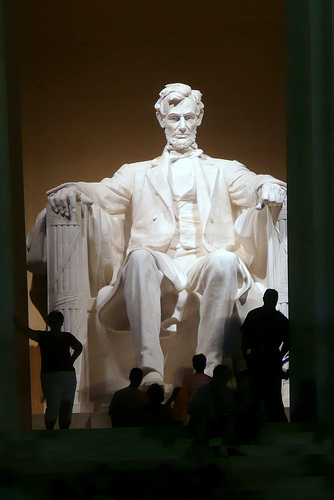
Lincoln memorial at night. by rjv541 on flickr (licensed CC-BY)
Assume it Will Have Low Light
One of the primary difficulties of interior photography is dealing with light. Anytime you're inside shooting interiors, low light is going to be a problem especially for digital cameras. You can minimize this problem by working with a tripod. The extra support of the tripod will let you take pictures at lower shutter speeds without getting a blur from the press of the shutter button or a slight movement from your body. Always have a filter handy or adjust the white balance on your camera to avoid the ugly tone of fluorescent lights.
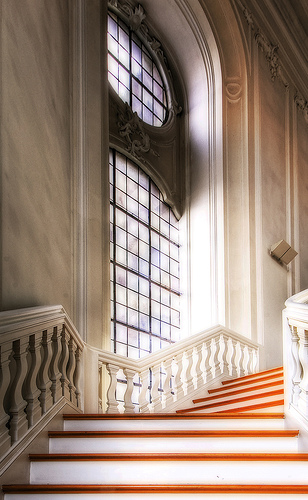
stairway by Wolfgang Staudt on flickr (licensed CC-BY)
Look Around
We spend a lot of time looking around but what are we really noticing? When we're in a hurry to go from "point a" to "point b" we usually don't take time to look around. As the photographer, you are afforded the luxury of time – so be sure to examine your entire environment. With interior photography there are lots of beautiful pictures of floors, ceilings and wall decor and lots of other things that the photographer never would have noticed if they didn't pay attention. Every interior has its beauty but it's up to you to discover it.
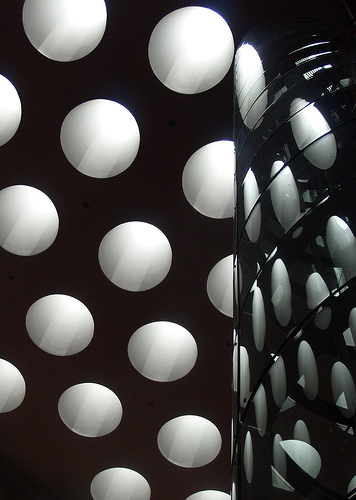
"kilen", frederiksberg, 2. august 2007 by seier+seier on flickr (licensed CC-BY)
Tell a Story
Photographs of walls and ceilings can certainly be pretty, but as a photographer it is your job to tell a story with every shot. You can use graffiti, building decay, signs, construction, people or anything else you can find to help tell the story in your picture. Even when it comes to interior photography, there should always be a purpose for taking the photograph. While "it looked pretty" works every now and then, challenge yourself to see through the layers of the world and find the connections we all share, but often miss.
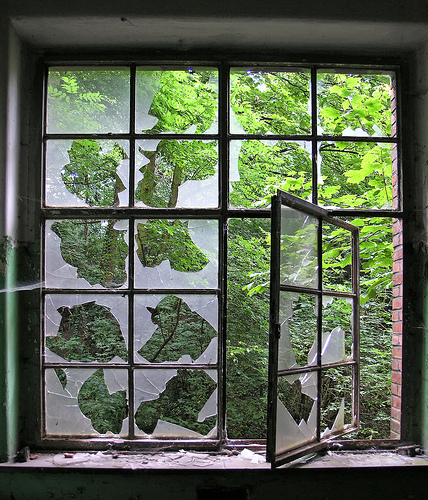
La Chartreuse - Not Thorough Enough by Justus Hayes on flickr (licensed CC-BY)
Your Perception Matters
What would be more visually interesting – a photograph of a spiral staircase, or a shot from the top of that staircase showing its long wind to the lower floors of a building? Whenever possible, try and force yourself to come up with new and interesting ways to capture an object. Much like human subjects, architecture can be made to look beautiful, ugly, or anywhere in between simply by finding a different angle or cropping out certain elements.
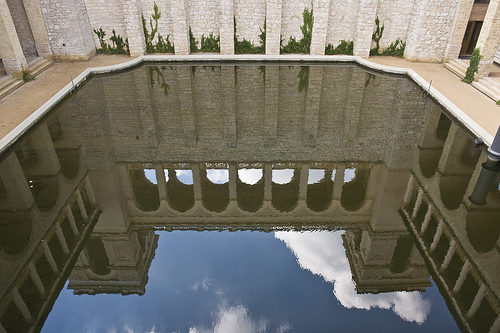
Belvedere on the Pfingstberg by Marcus Winter on flickr (licensed CC-BY-SA)
Interior photography is certainly a challenge, but without the necessity of a willing subject you may find that learning through trial and error is a little more fun. Set aside some time to shoot some of your favorite interiors, and let yourself discover ways to see them that you have never discovered. Just make sure that you have permission from the building owner – there are many interiors that are quite unfriendly to photographers. Most, however, are happy to welcome passionate shooters with minimal gear, so try to explore as many as possible.




